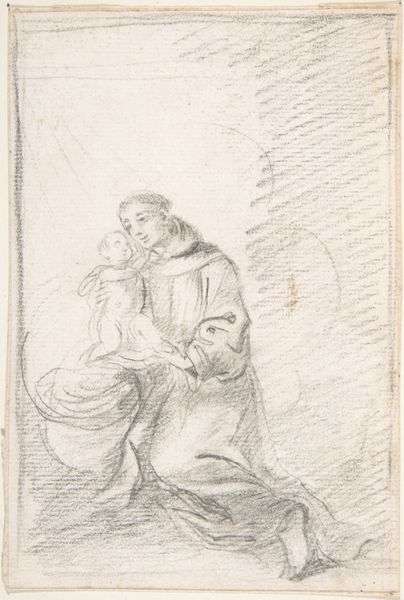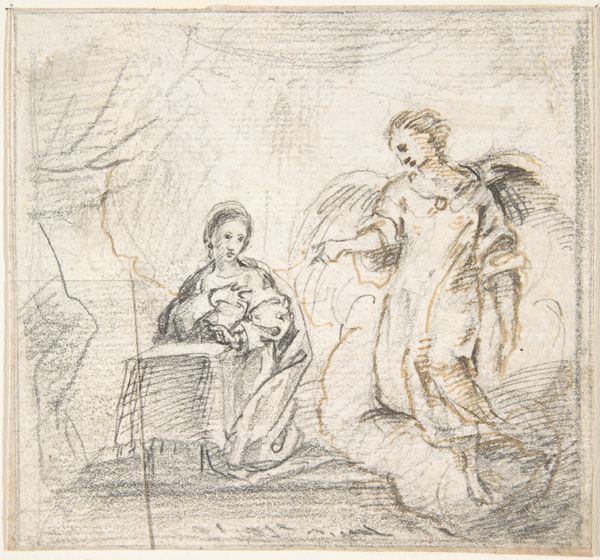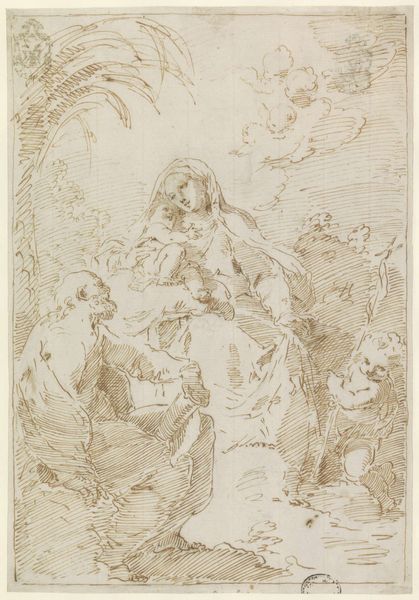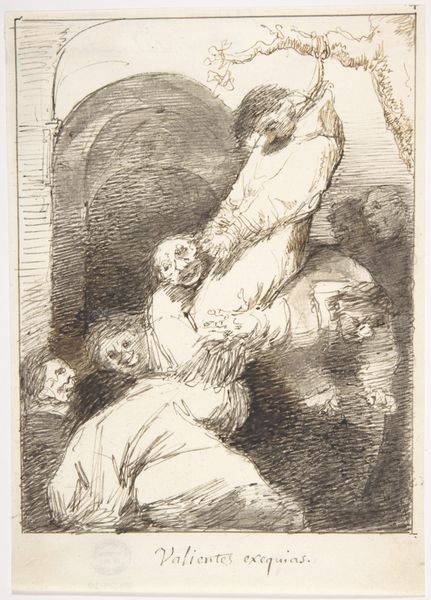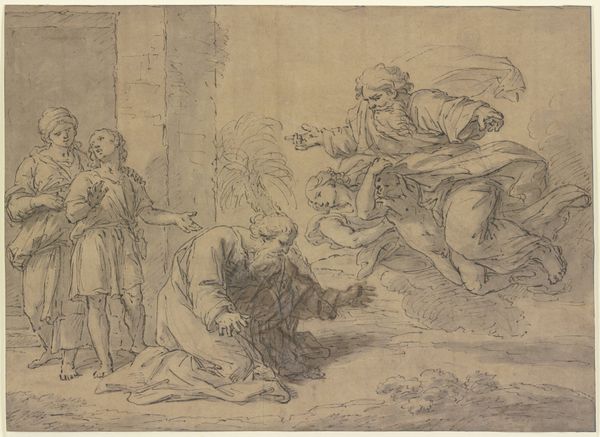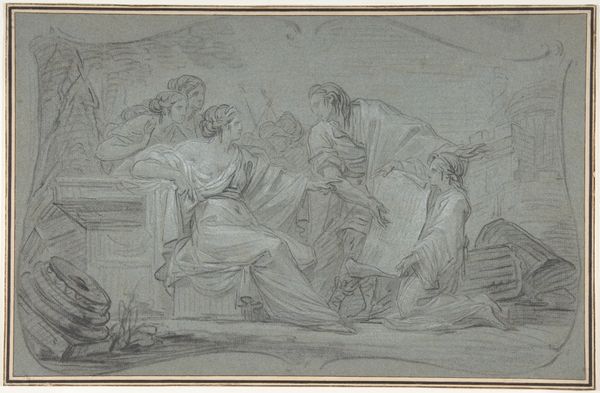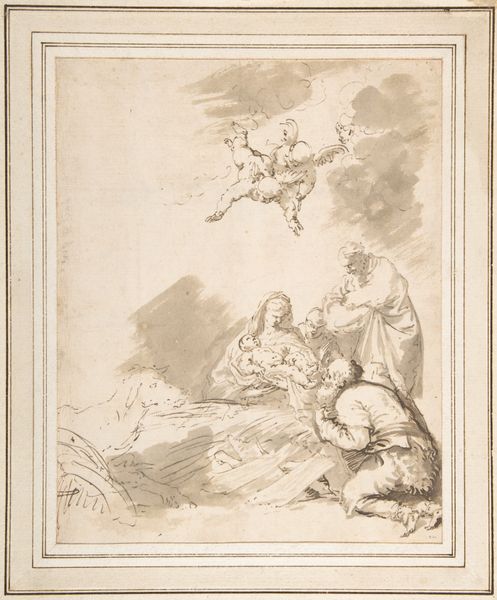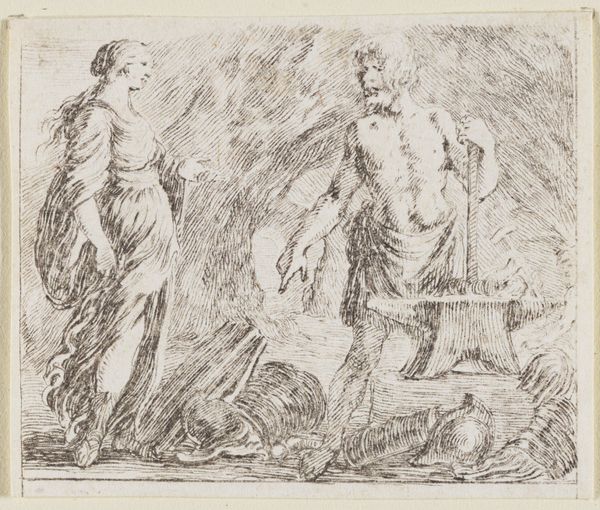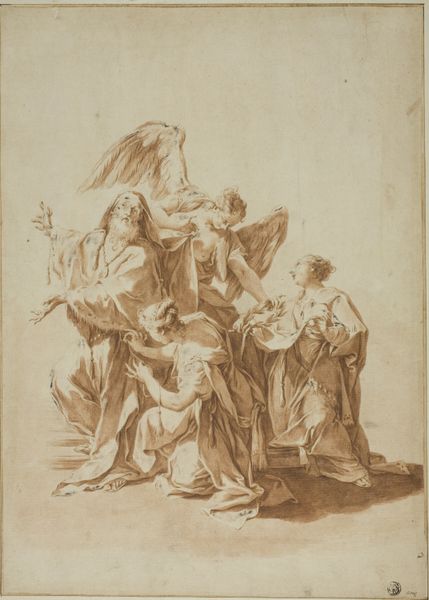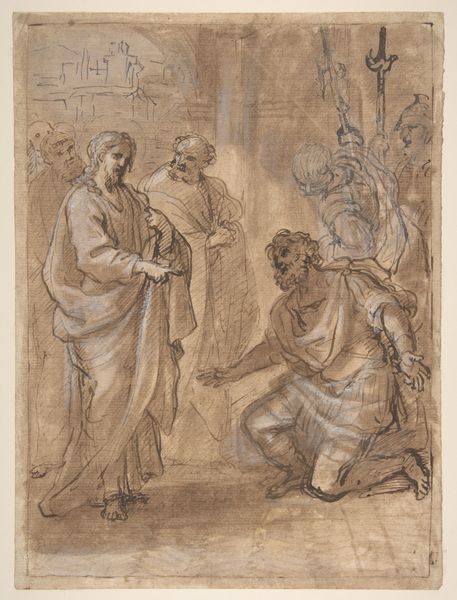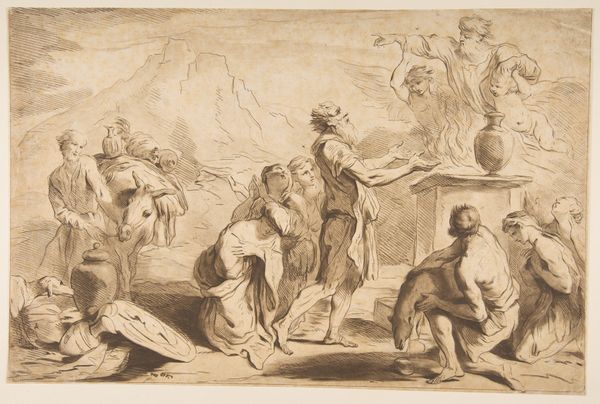
The Annunciation (Angel Approaching from Left) 1695 - 1705
0:00
0:00
drawing, print, pencil
#
drawing
#
baroque
# print
#
figuration
#
pencil
#
line
#
history-painting
#
angel
Dimensions: 4-1/16 x 6 in. (10.3 x 15.2 cm)
Copyright: Public Domain
Curator: Alright, let's dive into this striking drawing at The Met. It’s called "The Annunciation (Angel Approaching from Left)" and it’s attributed to Pedro Duque Cornejo, dating back to the late 17th or early 18th century. It's a delicate piece, done in pencil, with faint traces of, what appears to be, a preliminary sketch underneath. Editor: It’s interesting to see such a monumental, culture-shifting moment rendered so gently, so tentatively almost. I feel a real sense of anticipation, of the calm before a seismic shift. The sketchy quality gives it this feeling like you've just caught a glimpse of something sacred, something ephemeral about to disappear. Curator: Precisely. You sense the Baroque's signature dynamism, but subdued, reined in by the medium. Duque Cornejo clearly delineates form and volume through line work, foregoing dramatic shading. The composition really pulls me in, despite the fact it feels, visually, understated. It's an interesting treatment of this very well-known subject. Editor: Annunciation scenes, historically, have often served patriarchal narratives by glorifying a woman's passive role in a divine plan. It’s the perfect, quiet acceptance of Mary which has long served as the symbolic trope in art. But the interesting quality here, for me, is the drawing feels so like a fleeting moment—it softens this very traditional visual narrative, makes it more intimate. It invites inquiry, a reconsideration. Curator: I agree. The very sketch-like quality, I think, disrupts the sense of complete, finalized narrative. Also, Duque Cornejo has the angel arriving from the left, contrary to many established compositions. Small detail, but noticeable. Editor: It’s an unexpected visual cue. When you consider all of the subtle compositional and tonal nuances, and add that little difference, I would read it that this artwork refuses simple interpretations and highlights how such traditional subjects have been strategically reimagined to convey shifting or subversive messages in the past. Curator: Thinking about this artwork has become, I see, more about the power of restraint than I'd initially expected. And how, sometimes, suggestive unfinished lines speak more than polished declarations. Editor: And for me, it underscores the power of revisiting canonized narratives through an intersectional lens—examining how identity and cultural context sculpt our understanding, and challenge dominant perspectives.
Comments
No comments
Be the first to comment and join the conversation on the ultimate creative platform.
